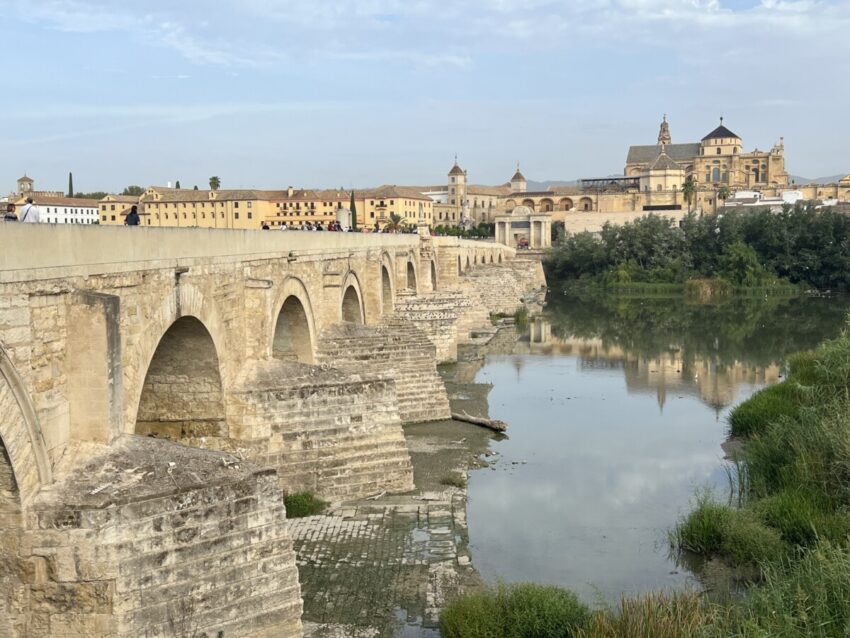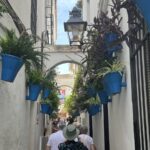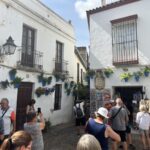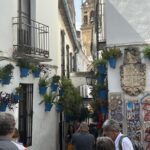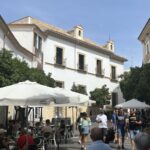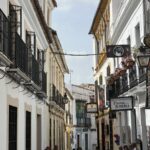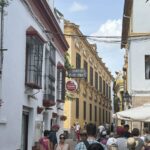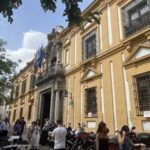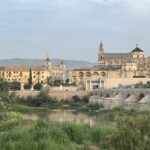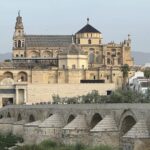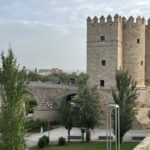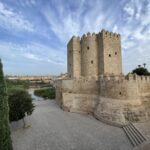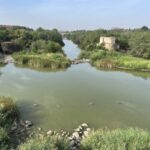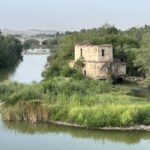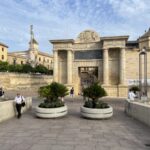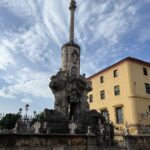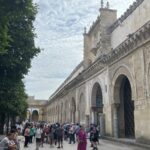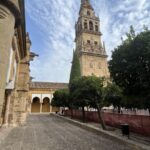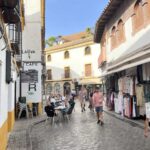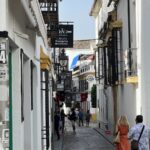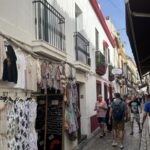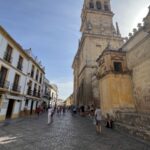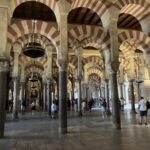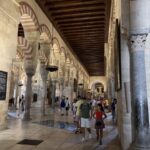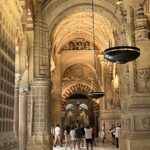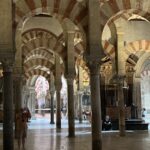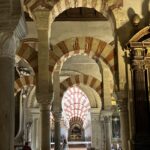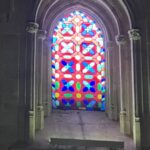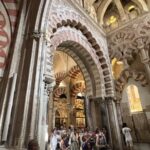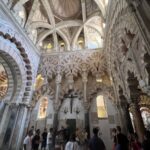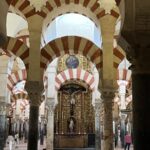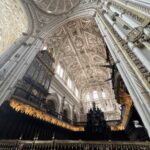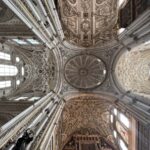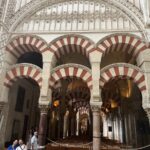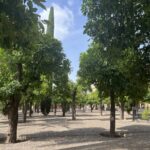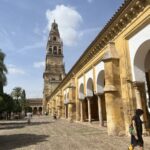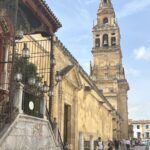After a lovely 2 days celebrating Iseult’s marriage to Darren and spending time with the Irish family, it was time to do a little bit of sightseeing before departing Spain, so off to Cordoba we went!! Never do a bus tour to Cordoba. Go by car! We left at 6am only to arrive there at 10am after spending 2 hours collecting other travellers and then a 30 minute toilet break en route, and almost 2 hours travel. And always remember, you are only as fast as the slowest person on tour!!!!
On arrival we visited the old Jewish quarter which is one of the most delightful areas of Córdoba to explore. With its narrow lanes, whitewashed houses, flower-filled patios, and quiet little squares, this area has an enchanting atmosphere.
One of the highlights of the old Jewish Quarter in Cordoba is the narrow and colorful Calleja de las Flores. Located off Calle Velazquez Bosco, the street is easily missed if you aren’t looking out for it.
Stroll slowly up the street and soak up the colorful and aromatic flowers. The street is relatively short, and before too long, you’ll emerge into a small plaza. At this point, turn around and look back down the street and up. This view is an iconic Cordoba photo: the Calleja de las Flores with the Mezquita Bell Tower in the background.
Another famous site in Cordoba is Puente Romano, a vestige of the ancient Roman era. The 16-arched bridge spans the Río Guadalquivir and is located directly behind the Mezquita.
The bridge was originally built after Caesar’s victory over Pompey the Great. Later, a Moorish bridge was built on the foundations of the Roman bridge.
Sitting at one end of the bridge is the Torre de la Calahorra, a 12th-century gate tower. The tower once functioned as part of the city’s medieval fortifications. During the Christian Reconquest in the 13th century, this gate tower made it difficult for the Catholic king, Fernando III, to enter Córdoba.
The Calahorra Tower now houses the Museo Vivo de Al-Andalus. This museum explores the religious and cultural elements that have formed the Andalusian identity. The museum celebrates the period in history when the Christian, Jewish, and Muslim communities of Córdoba lived together in harmony.
La Mezquita is the Great Mosque that was created for the Caliphate of Córdoba, an important Moorish kingdom of Andalusia. Built in the eighth century, the UNESCO-listed Mezquita is a masterpiece of Islamic architecture and is considered one of the most striking monuments of Moorish Spain.
From the Patio de los Naranjos, you reach the Mudéjar-style Puerta de las Palmas, which opens into the prayer hall of the mosque. This impressive hall is an endless forest of 856 columns and awe-inspiring arches. The marble and jasper columns are linked by red and white horseshoe arches.
In the prayer hall, the mihrabs (prayer niches) mark the direction of Mecca. The Mihrab Nuevo, which displays the Koran, is an incomparable work of Islamic decoration. Crafted from a single block of marble, it is covered with a great profusion of floral and geometric patterns and verses from the Koran in Arabic script.
The mosque was converted to a cathedral in 1523 by the Catholic Monarchs. The cathedral’s sanctuary, with its Gothic choir, was plopped right in the center of the mosque, while keeping the basic framework of the Islamic architecture. The mosque-to-cathedral conversion makes for an incongruous sense of design but serves as a reminder of Córdoba’s multicultural heritage.
Off back to Calahonda to pack!!

